When it comes to insulating an attic, one common question that arises is whether it is safe to lay insulation over electrical wires. The quick answer is yes. You can absolutely lay insulation over electrical wires.
Attic insulation is essential for maintaining a comfortable temperature in your home, reducing energy costs, and preventing damage from moisture and condensation.
However, ensuring that the insulation does not pose any safety risks is crucial. In this context, it is important to understand the proper way to install insulation over electrical wires in the attic.
This may involve taking necessary precautions and following specific guidelines to ensure your home’s and its occupants’ safety.
In this article, we will explore the factors to consider when laying insulation over electrical wires in the attic and offer tips to ensure a safe installation process.
You need to take note of the type of insulation you should use when insulating your attic and electrical wires.
A key component of insulation installation is understanding how to do it safely. A key element in avoiding hot areas is to avoid high heat sources.
Can You Lay Insulation Over Electrical Wires In The Attic?
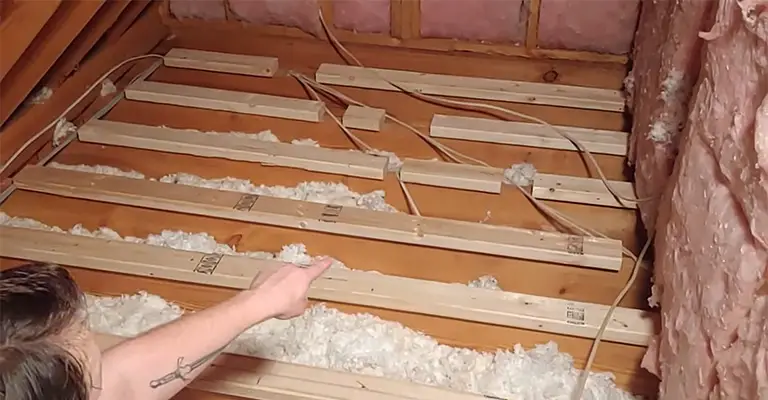
Absolutely, you can. As well as insulating the junction boxes, you can wrap them in foam insulation. By using fiberglass insulation, you will ensure a fire-resistant setup and also reduce airflow from your home.
Covering junction boxes with a cover that might need to be removed to access wiring is prohibited. You are not removing a light fixture to access the junction boxes that are facing down into the attic.
There are a variety of junction boxes that are only used to join wires and perform splices but are covered, so the wires can only be accessed from the attic.
Most of the time, there are none, but they might exist, and you can’t cover them, so you don’t see and access them.
By the way, stay away from covering any recessed lighting fixtures. Certain types of them can be used without insulation. Overheating may occur if the insulation is placed too close or too high.
You must know the fixture’s requirements to get the most out of it. Ensure they don’t overheat, so you do not have an attic fire.
England’s regulation states that all surface wiring should be visible, not covered in insulating materials such as Rockwool or fiberglass. If the heavy current is passed through the cables, heat is dispersed through this arrangement.
As well, downlighter fittings should not be used unless they are enclosed in fire-retardant cases. A halogen fitting produces a great deal of heat, which must be emitted, or combustion may occur.
Insulation between ceilings and floors should be positioned over the wiring, with an air gap above, and spread apart as much as possible to prevent overheating.
A single inch of insulation should not be adjacent to the partition wall when wiring through it, especially those containing rigid foam or polystyrene.
Insulation Around Junction Boxes?
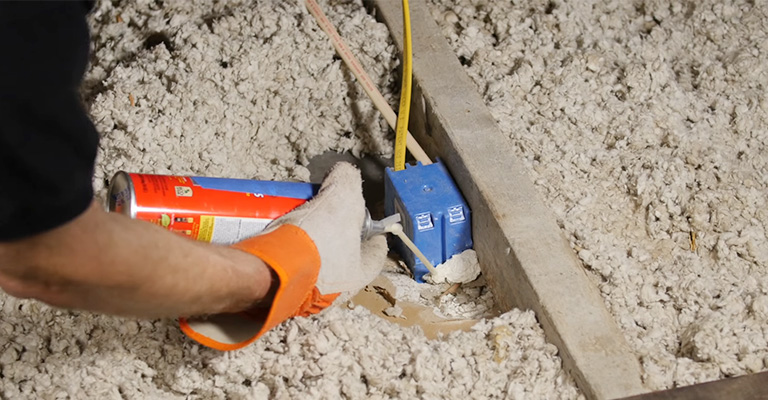
It is also believed that you cannot install insulation around junction boxes by most people. In contrast, fiberglass insulation can be laid around junction boxes without problems.
Quick Tip: Insulation cannot be installed in a junction box that contains heat. Avoiding such things will help prevent an electrical fire in your attic.
Insulation In The Attic
Choosing the right type of attic insulation can determine whether it can cover electrical wiring. In the attic, fiberglass insulation is a perfect option for covering electrical wires since it is non-flammable.
Currently, cellulose fiber insulation is the most popular insulation choice in homes. Because cellulose is made from recycled paper, it can be flammable under extreme conditions.
When installing attic insulation, it is highly recommended that you cut the batts in half in the middle. This is done to ensure the middle of the batt goes around the electrical wires. Afterward, one flap goes over the electrical wires, and the other flap goes under them.
Ensure you don’t mash the insulation onto and around the electrical wires for no reason whatsoever. Insulation for the attic should be laid gently alongside wires and between joists.
It is not uncommon for people to think that you cannot wrap insulation around a junction box, but you can! Fiberglass insulation is required, and it will be fine so long as it isn’t a heat source. In some cases, insulation cannot be used around can lights!
In many cases, it is beneficial to insulate the junction box as this inhibits air exchange and improves the insulation in the building. It is essential to remember this since an electrical fire in your home is the last thing you want to happen.
Wiring In The Attic
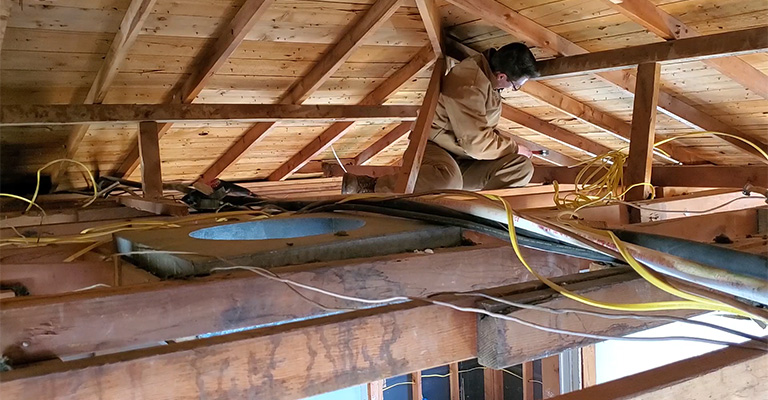
Let’s investigate what goes on in the attic. We will be able to make an informed decision based on this information regarding electrical wire insulation.
- It is typical for attic wiring to be made of NM cable (non-metallic cable). In most areas of the US, it is permitted, but not in all. Always check with the builder before making any decisions. Nonetheless, if this is in an existing home, speak with your local electrician or home inspector.
Best Way To Install Insulation
Before you install insulation in the attic and cover your electrical wires with it, there are a few things you should prepare. First of all, you will need to apply caulk or spray foam around any wiring.
To cover any electrical outlets in the attic, you will need to lay a polyethylene vapor barrier. By doing this, the outlet space will be sealed so that no air can escape.
A typical attic insulation project involves the use of faced insulation. As fiberglass insulation is non-flammable, it is non-combustible. The vapor barrier in this type of insulation prevents moisture from flowing between spaces in a home.
As long as the previous insulation layer is not wet, you may lay another layer of insulation over it. You shouldn’t allow moisture to accumulate between layers in your attic, as it will breed mold and mildew.
Some Tips To Install Insulation In The Attic
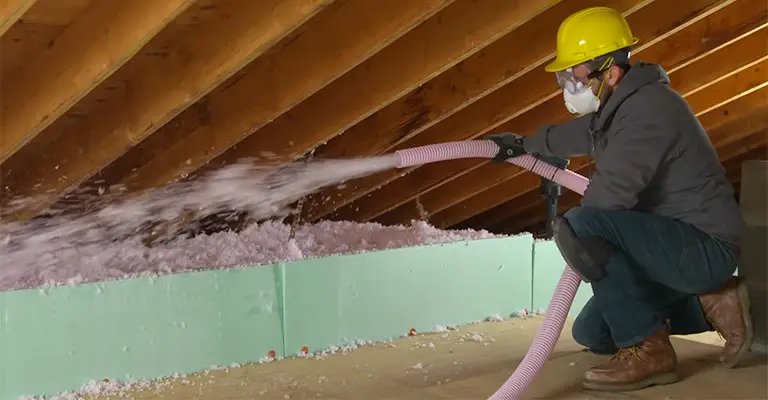
You should follow several steps carefully when laying insulation in an attic. In this section, I will outline each one in detail.
The first step is to make sure that any spray foam or caulk that you use around the wires is sealed.
Before installing the insulation, lay polyethylene vapor barriers. Using fiberglass insulation with a vapor barrier eliminates the need for polyethylene insulation.
Instead of laying the insulation’s vapor barrier on the warm side of the attic, place it on the cool side.
On the insulation, remember to cut a slit for electrical wires. The best thing to use here is a sharp knife.
The top layer of insulation can be covered with insulation. In this situation, you don’t have to worry about laying the second insulation because the first doesn’t have a vapor barrier.
When laying insulation with a vapor barrier, make sure you do not lay the vapor barrier side over the existing insulation. In this case, moisture will be trapped between the two insulations.
To do this, you must remove the vapor barrier on the second insulation. After that, you should place it on top of the old insulation.
Quick Tip: Mold and mildew love moist environments, making them easy to grow between the insulations. Additionally, you should take a look at the attic ventilation system.
The attic can’t maintain the warm or cool temperatures required during different months of the year without a proper ventilation system. In other words, make sure the ventilation system is working properly.
Problems With Insulation In The Attic
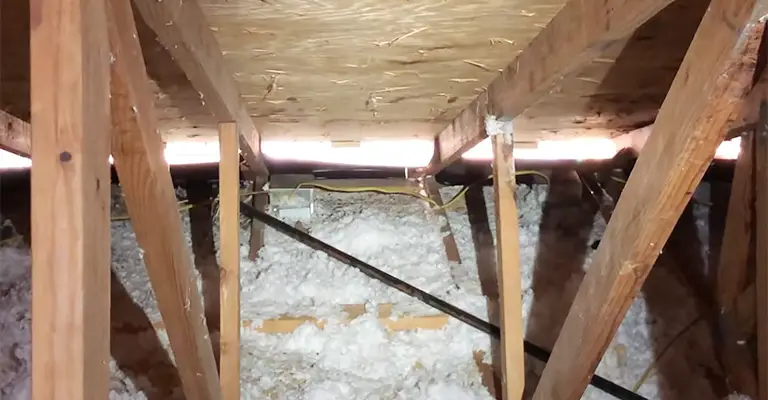
Most houses around have old wiring, which isn’t uncommon. It is important to look at the building records for the wiring. It is important to ensure that any additional insulation does not pose a fire hazard.
Aluminum wires were used in homes in the 1960s-70s, which are fire hazards, so you should avoid them. Insulation can only be installed if the heater is working.
A fire hazard was also created by cloth wiring used in homes in the 1970s and 1980s. Ensure the pest does not live in your attic or home. Replace the aluminum wiring in your home before adding insulation, just as you would the aluminum wiring.
How Much Will It Cost?
It is typical to expect to pay $1,300 to $2,500 for installation. The cost varies depending on the size of the attic and the market rate for the materials and labor.
The price will vary based on the type of material you choose but will usually range from $1.50 to $3.50 per foot.
Other Recommended Maintenance
As you decide what kind of insulation to use around your electrical wiring in the attic, ensure the attic’s ventilation system is also being considered. Maintaining a comfortable temperature in your attic during different months is important.
It is a good idea to check your attic fan ventilation needs. Following the installation of insulation around your electrical wiring, you may want to take the time to explore the attic.
The topic of cooling your attic is one of the most recommended at this time. You need to keep your attic cool in the warmer months so that insulation, wiring, and HVAC parts are protected from damage.
You should also consider getting a thermal imaging inspection. Thermal anomalies can be identified with this service by measuring surface temperatures.
In some cases, it may also show a temperature that is different from what is expected on the surface.
Leaks, pests, and electrical problems are detected upon further investigation with other tools. If you need new insulation in the walls of your home as well, you will need to know this information.
To prevent air from escaping from IC-rated recessed lights, ensure they have enough insulation around them.
When Do I Call A Professional?
In any case, where you might be dealing with electrical wiring, you should consult a professional electrician. Attic insulation should be applied after you know what wires were used in your home.
Regarding the insulation surrounding electrical wiring, ensure the type is appropriate. By doing so, you will be able to avoid the possibility of a house fire and disaster.
Conclusion
Putting insulation on top of or around electrical wiring in your attic is unreasonably complicated. If you are planning to build a home, consulting with a professional electrician and general contractor is always wise.
The point is to avoid the heartache of possibly using the wrong insulation and to save yourself time and headaches.
Home inspections are a good idea when you live in your local area. A reliable general contractor can help you with the insulation and refer you to a qualified insulation contractor.







